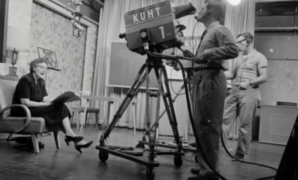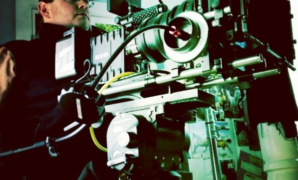Cinematography plays a crucial role in creating memorable and emotionally resonant scenes in films. By analyzing iconic scenes shot by […]
Category: Cinematography
Cinematography: Painting with Light and Motion
Cinematography, often described as the art and craft of motion-picture photography, is a crucial element in filmmaking that goes far beyond simply recording events on camera. It’s about visual storytelling, creating mood, and guiding the audience’s emotions through carefully crafted images. This article delves into the world of cinematography, exploring its key elements and the artistry behind it.
What is Cinematography?
At its core, cinematography is the science and art of capturing moving images on film or digital media. However, it encompasses much more than just operating a camera. Cinematographers, also known as Directors of Photography (DPs), are responsible for the visual look of a film, making decisions about lighting, camera movement, framing, and more.
Key Elements of Cinematography
1. Camera Techniques
The way a camera is used can dramatically affect how a story is told:
- Camera Movement: Techniques like pans, tilts, dolly shots, and steadicam movements can add dynamism to a scene or subtly guide the viewer’s attention.
- Framing and Composition: How elements are arranged within the frame can create balance, tension, or emphasize certain aspects of the scene.
- Depth of Field: Controlling what’s in focus and what’s not can direct the viewer’s attention and create a sense of space.
2. Lighting
Lighting is perhaps the most crucial aspect of cinematography:
- Three-Point Lighting: A basic setup using key, fill, and back lights to illuminate a subject.
- Natural vs. Artificial Light: Each has its characteristics and can be used to create different moods.
- Color Temperature: The warmth or coolness of light can significantly impact the emotional tone of a scene.
3. Visual Storytelling
Cinematography is fundamentally about telling stories visually:
- Shot Types: Wide shots, medium shots, and close-ups each serve different narrative purposes.
- Angles: High angles, low angles, or Dutch angles can convey power dynamics or psychological states.
- Color Theory: The use of color can set the mood, create visual themes, or subtly guide the viewer’s emotions.
4. Equipment
A cinematographer must be well-versed in various tools of the trade:
- Cameras: From traditional film cameras to the latest digital cinema cameras.
- Lenses: Different lenses can dramatically alter the look of an image.
- Lighting Equipment: From large HMI lights to small LEDs, each tool has its place.
- Camera Support: Tripods, dollies, gimbals, and other support systems enable various types of shots.
The Art of Cinematography
While technical knowledge is crucial, great cinematography also requires an artistic eye and a deep understanding of visual storytelling. Cinematographers must work closely with directors to translate the script into compelling visuals, considering factors like:
- The overall visual style of the film
- How to use visuals to support character development and narrative arcs
- Creating visual motifs and themes throughout the film
- Balancing aesthetic choices with practical considerations of budget and schedule
Digital vs. Film
The debate between digital and film cinematography continues to evolve:
- Digital offers more flexibility in post-production and is generally more cost-effective.
- Film provides a distinctive look that many still prefer, especially for certain genres or period pieces.
- Many cinematographers now blend both, choosing the medium that best fits each project.
Cinematography in Different Genres
The approach to cinematography can vary greatly depending on the genre:
- Horror films often use shadow and unconventional angles to create tension.
- Romantic comedies might opt for warm, flattering lighting.
- Science fiction can push the boundaries with innovative visual effects and futuristic looks.
The Future of Cinematography
As technology evolves, so does cinematography:
- Virtual production techniques are blending live-action cinematography with real-time computer graphics.
- Advancements in LED lighting are offering new possibilities for on-set lighting.
- High-dynamic-range (HDR) and high-frame-rate (HFR) technologies are expanding the boundaries of what’s possible.
Cinematography is a blend of technical skill and artistic vision, crucial in shaping how we experience films. Whether you’re an aspiring filmmaker or a cinema enthusiast, understanding cinematography can deepen your appreciation for the visual language of film and the artistry behind the images that move us.
Silent Era Cinematography Pioneers: Techniques & Influential Figures
The silent film era marked the birth of cinematography as an art form. During this groundbreaking period, a handful of […]
Famous Cinematographers: Masters of Visual Storytelling
Cinematography is a crucial element of filmmaking that shapes the visual language and emotional impact of a movie. Famous cinematographers, […]

